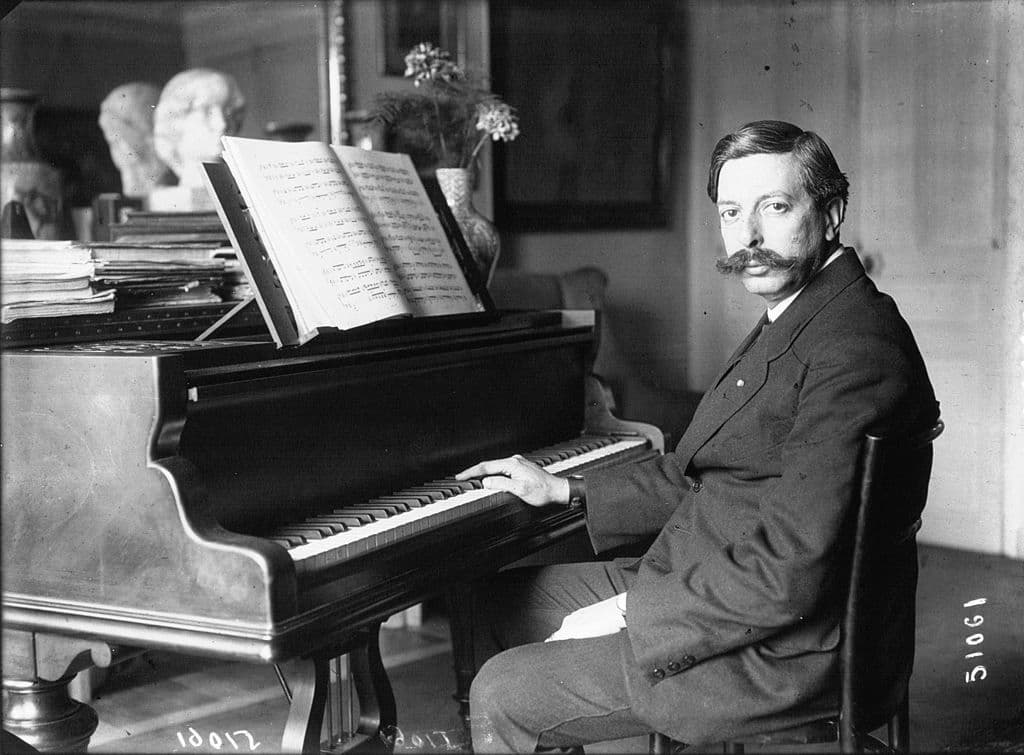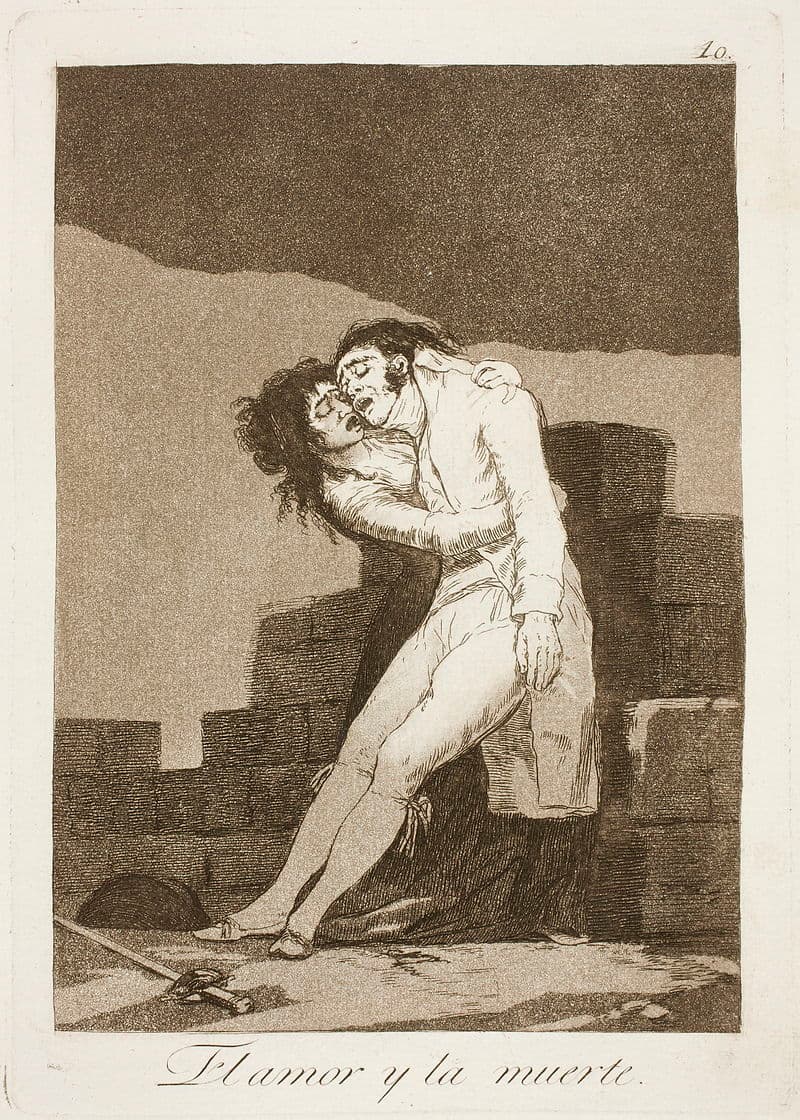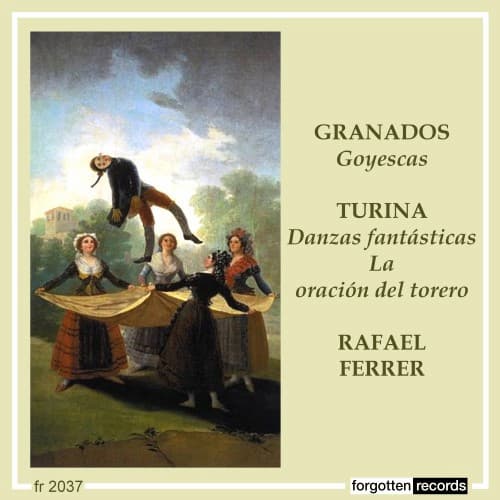The late 19th century saw a glorification of Spanish culture under the general label of the Hispanidad. All sectors of Spanish culture were up for reappraisal and promotion. One of those was the celebration in 1897 of the 150th anniversary of the birth of Francisco Goya. The painter’s ‘pessimistic and disenchanted realism’ struck a chord in the Spanish heart and was taken up by Granados in a rather romantic style.

Enrique Granados in 1914
He approached composition with the strength of being both a concert pianist and a virtuoso on an international scale. He didn’t go down the paths of Italian verismo or French Impressionism but kept to a native Spanish style that had many admirers.
Goyescas started as a piano suite in 1911 and was based on some of Goya’s pictures in the Prado Museum. In 1914, after being conferred the French Legion of Honour, he was commissioned by the Paris Opéra for a lyric opera to be based on Goyescas. It was developed into a one-act, three-part opera, with the music set to a libretto by Fernando Periquet y Zuaznabar.
Fernando loves the noblewoman Rosario, who is loved by the bullfighter Paquiro. Fernando’s jealousy of Paquiro results in a duel where the bullfighter is victorious; he flees while Fernando dies in Rosario’s arms.

Goya: El amor y la muerte, 1799 (Museo del Prado)
This extract from the opera, Interludio – La Maya y El Ruiseñor (Interlude – The Maja and the Nightingale), comes in the scene break before the duel. The interlude is the music for the entr’acte and The Maja and the Nightingale comes as Rosario anxiously awaits the outcome of the duel. It’s a sweet and melancholic song of anxious waiting.
The Maja and the Nightingale was used in the 1940s as the basis for the con Bésame Mucho by Consuolo Velázquez.
The opera was not given its premiere at the Paris Opéra because of the onset of WWI; The Metropolitan Opera in New York gave its first presentation and was the first opera in Spanish to be presented there. The sets (by Antonio Rovescalli) and the costumes (by G.B. Santoni) followed the paintings of Goya. Granados was delayed in his return by a request by President Woodrow Wilson for a piano recital at the White House. On his postponed return, Granados’ ship, the Sussex, was torpedoed in the English Channel by a German U-Boat on 24 March 1916, and the composer and his wife were drowned.
Enrique Granados: Goyescas (Extraits Symphoniques) – Interludio – La Maya Y El Ruiseñor

Rafael Ferrer
This recording was made in 1955 at the Maison de la Mutualité, Paris, by the Orchestre de la Société des Concerts de Conservatoire under the direction of Rafael Ferrer. The Orchestra was established in Paris in 1828 and was made up of professors from the Paris Conservatoire and their pupils. It was intended to be a group that played the latest music but later became more conservative in its repertoire. The Orchestra was reformed in 1967 as the Orchestre de Paris.
The Spanish conductor Rafael Ferrer made his name in conducting zarzuelas and in leading the Municipal Orchestra of Barcelona. He also conducted internationally and led the orchestra for Spain’s first entry into the Eurovision Song Contest in 1961 (Estando contigo).

Performed by
Rafael Ferrer
Orchestre de la Société des Concerts du Conservatoire
Recorded in 1955
Official Website
For more of the best in classical music, sign up for our E-Newsletter
